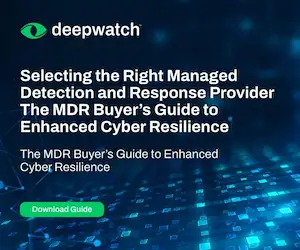
Network Behavior Analysis (NBA) is a cybersecurity technique that focuses on monitoring, modeling, and analyzing patterns of network traffic to detect anomalies that may indicate malicious activity. Unlike traditional signature-based detection systems, Network Behavior Analysis leverages statistical modeling, machine learning, and heuristics to establish baselines of “normal” behavior, enabling it to identify zero-day attacks, advanced persistent threats (APTs), and insider threats that evade conventional defenses.
How Network Behavior Analysis Works
To understand the power of Network Behavior Analysis (NBA), it’s essential to grasp its foundational elements—traffic monitoring, baseline creation, anomaly detection, and behavioral analytics.
- Traffic Monitoring and Data Collection: NBA systems ingest vast volumes of network metadata, including flow data (e.g., NetFlow, IPFIX), packet headers, and protocol usage, across routers, firewalls, switches, and endpoints. This continuous, agentless monitoring provides comprehensive visibility into east-west and north-south traffic within enterprise environments.
- Baseline Profiling and Anomaly Detection: Over time, NBA solutions establish dynamic behavioral baselines for users, devices, and applications. These baselines include metrics such as bandwidth usage, connection frequencies, protocol distribution, and typical communication patterns. Anomalies are flagged when deviations from these baselines are detected, such as a server suddenly communicating with an external host or data exfiltration outside of business hours.
- Machine Learning and Behavioral Correlation: Advanced NBA platforms utilize supervised and unsupervised machine learning algorithms to detect subtle deviations and patterns over time. They also integrate with SIEMs and SOAR tools to correlate behavioral anomalies with other indicators of compromise (IoCs), such as file hashes, domain reputation scores, or endpoint detections.
Importance of Network Behavior Analysis to Enterprise Cybersecurity Operations
For cybersecurity operations professionals tasked with defending large, complex environments, Network Behavior Analysis (NBA) provides a robust and adaptive layer of threat detection.
- Zero-Day Threat and APT Detection: Because NBA does not rely on known signatures or rules, it can identify previously unseen threats, such as custom malware or obfuscated command-and-control (C2) communications. This capability is crucial for mitigating risks associated with nation-state actors, insider threats, and sophisticated criminal syndicates.
- Insider Threat and Lateral Movement Visibility: By analyzing internal traffic flows, NBA can identify patterns indicative of credential misuse, unauthorized data access, or lateral movement across VLANs and segments. For SOC analysts and threat hunters, these insights are critical in detecting stealthy post-compromise behavior that traditional IDS/IPS may miss.
- Operational Efficiency for SOC Teams: NBA platforms often include automated alert prioritization and contextual enrichment, reducing false positives and analyst fatigue. They enable tier-1 and tier-2 analysts to triage alerts more quickly and escalate only genuine threats, thereby improving the mean time to detect (MTTD) and the mean time to respond (MTTR).
Network Behavior Analysis Use Cases and Integration Scenarios
Network Behavior Analysis (NBA) aligns with a wide range of use cases that support enterprise-scale security operations and regulatory mandates.
- Cloud and Hybrid Environments: NBA is invaluable in monitoring traffic across multi-cloud and hybrid architectures, where traditional perimeter-based security is ineffective. It helps enforce micro-segmentation and detect policy violations in real-time.
- IoT and OT Security: In environments where agents can’t be deployed (e.g., SCADA systems, medical devices), NBA offers non-intrusive monitoring capabilities that enhance visibility and risk management without disrupting operations.
- Compliance and Auditing: NBA supports compliance efforts (e.g., PCI DSS, HIPAA, NIST) by generating audit-ready reports of network activity, access controls, and anomaly investigations. This documentation is crucial for demonstrating due diligence and risk mitigation to auditors and regulators.
Emerging Trends in Network Behavior Analysis
As cyber threats evolve, Network Behavior Analysis (NBA) technologies are becoming more sophisticated and integrated with broader cybersecurity ecosystems.
- AI-Driven Threat Detection: NBA platforms are increasingly incorporating deep learning models that can process complex network graphs and temporal relationships to predict and prioritize threats with greater accuracy.
- XDR and Zero Trust Synergy: NBA is playing a foundational role in Extended Detection and Response (XDR) strategies and Zero Trust architectures. By continuously validating behavior and enforcing trust boundaries, NBA ensures only legitimate and expected traffic is allowed across the network.
- Decentralized Analytics and Edge Monitoring: To accommodate high-throughput environments and low-latency requirements, NBA is being deployed at the network edge and integrated with Software-Defined Wide Area Networks (SD-WANs). These edge nodes perform localized analysis and only escalate relevant findings to central platforms, improving scalability and response times.
How Managed Security Services Leverage Network Behavior Analysis
Managed security services (MSS) play a pivotal role in operationalizing Network Behavior Analysis (NBA) by integrating its capabilities into 24/7 threat monitoring, automated detection, and rapid incident response workflows. MSS providers enable enterprises to harness the power of behavioral analytics without the complexity of deploying and maintaining large-scale NBA platforms in-house.
- Real-Time Anomaly Detection and Threat Hunting: MSS providers use NBA to baseline network traffic patterns across all segments—data centers, cloud environments, and branch locations. By continuously analyzing flow data and packet metadata, MSS can identify deviations such as unexpected lateral movement, port scanning, or data exfiltration attempts. These anomalies trigger alerts that are enriched with contextual information to support high-fidelity threat hunting and faster triage.
- Integration with SIEM and XDR Platforms: NBA insights are fed into Security Information and Event Management (SIEM) systems and Extended Detection and Response (XDR) platforms, which are managed by the Managed Security Service (MSS) provider. This integration allows for correlation with endpoint telemetry, identity logs, and threat intelligence feeds, providing a unified view of threat actor behavior. MSS analysts utilize this consolidated visibility to construct attack timelines and identify indicators of compromise (IoCs) across multiple domains.
- Customized Detection Logic and Behavioral Tuning: MSS teams tailor NBA models to reflect the unique operational context of each client, such as standard communication patterns for specific business units or seasonal variations in traffic. Behavioral tuning reduces false positives and enhances the relevance of anomaly detections. MSS also updates detection logic dynamically based on emerging threats and client-specific risk profiles.
- Automated Response and Forensic Analysis: When the NBA flags a critical threat, MSS can initiate automated responses, such as isolating compromised hosts or blocking malicious IPs, through orchestration tools. For more complex incidents, MSS analysts conduct in-depth forensic investigations using NBA logs to reconstruct the attacker’s tactics, techniques, and procedures (TTPs) and provide detailed post-event reports.
Managed security services operationalize Network Behavior Analysis at scale by combining behavioral intelligence with expert human oversight and automated remediation. This partnership enhances threat detection coverage, accelerates incident resolution, and provides organizations with adaptive defenses against evolving cyber threats.
Conclusion
Network Behavior Analysis is a cornerstone technology for modern cybersecurity operations, offering unmatched visibility and adaptability in detecting advanced, stealthy threats. For cybersecurity architects, SOC managers, and CISOs overseeing Fortune 1000 networks, NBA provides a proactive, analytics-driven approach to threat detection that complements existing controls, fortifies situational awareness, and accelerates response capabilities. In a landscape where threat actors evolve rapidly and enterprise boundaries are increasingly blurred, NBA is not just a tool—it’s a strategic necessity.
Deepwatch® is the pioneer of AI- and human-driven cyber resilience. By combining AI, security data, intelligence, and human expertise, the Deepwatch Platform helps organizations reduce risk through early and precise threat detection and remediation. Ready to Become Cyber Resilient? Meet with our managed security experts to discuss your use cases, technology, and pain points and learn how Deepwatch can help.
Learn More About Network Behavior Analysis
Interested in learning more about Network Behavior Analysis? Check out the following related content:
- Threat Detection Engineering Explained: Tools, Tactics, and Trends: This glossary entry explores the discipline of threat detection engineering, emphasizing the development of detection logic and mechanisms to identify malicious behavior. It discusses the integration of behavioral analytics and the importance of understanding network patterns to enhance threat detection capabilities.
- Deepwatch’s Network Security Best Practices: This blog post outlines best practices for network security, highlighting the role of behavioral analytics and traffic analysis in monitoring systems. It highlights the importance of logging and analyzing network data to identify anomalies and potential threats.
- A Guide to Building a Resilient Security Operations Program: This guide provides insights into constructing a robust security operations program, focusing on data logging strategies, risk profiling, and the utilization of behavioral analytics to enhance detection and response mechanisms.
